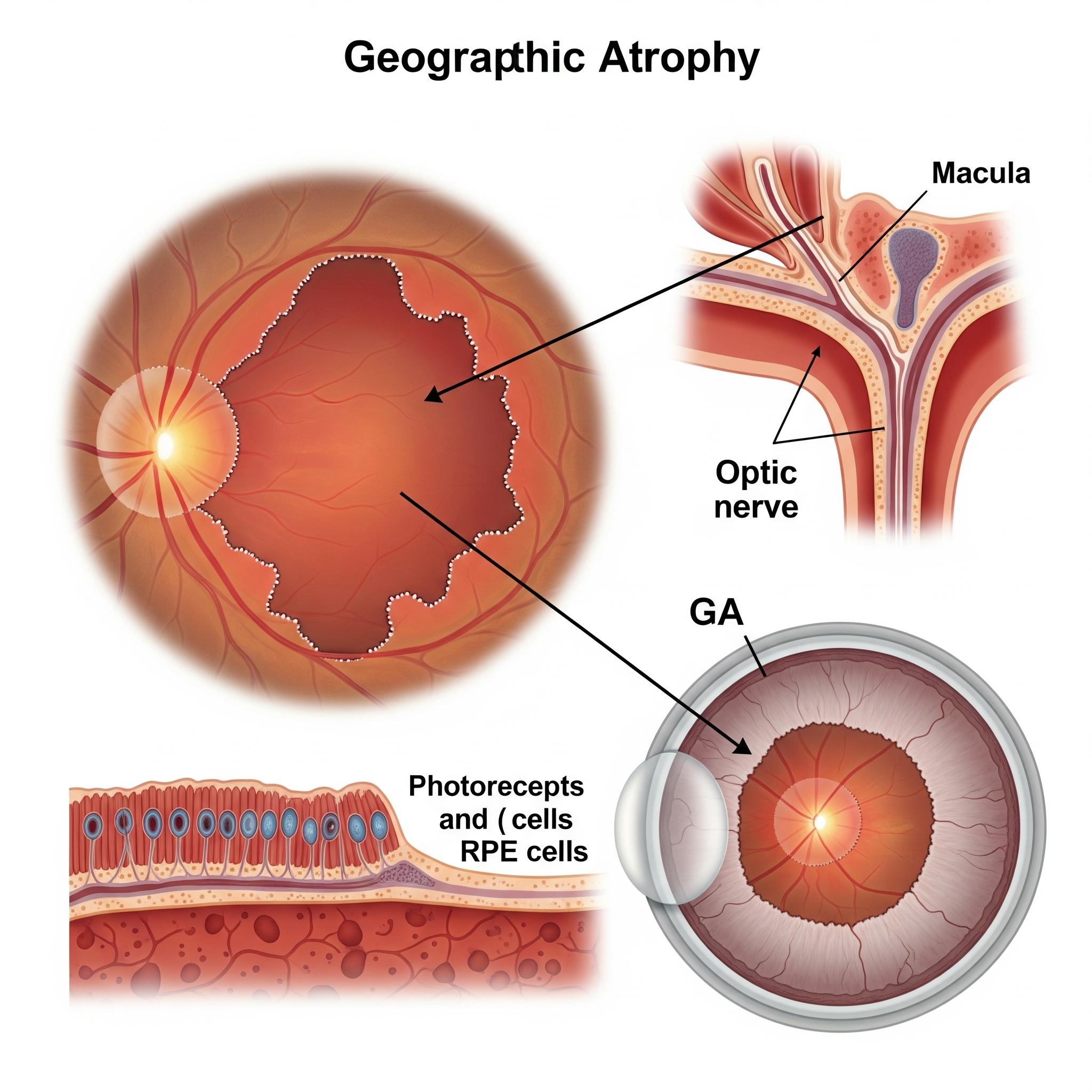Retinal Degeneration Redefined: GA’s Emerging Therapies Explained

Geographic Atrophy (GA), an advanced form of dry age-related macular degeneration (AMD), is gaining clinical urgency due to its irreversible impact on central vision. As retinal cells degenerate, patients face progressive visual field loss, making everyday tasks such as reading or facial recognition increasingly difficult. With aging populations worldwide, the burden of GA is rising, prompting rapid therapeutic innovation and clinical focus.
Request a sample copy of the CI report at:
https://www.datamintelligence.com/download-sample/geographic-atrophy-market
Understanding GA: An Irreversible Form of AMD
GA is characterized by the progressive atrophy of the retinal pigment epithelium (RPE), photoreceptors, and choriocapillaris in the macula. Unlike wet AMD, GA does not involve neovascularization but leads to a steady expansion of atrophic lesions that eventually merge, causing severe central vision loss.
While early AMD may be asymptomatic, GA typically presents with:
* Difficulty seeing in low light
* Blurred or patchy vision
* Central blind spots (scotomas)
Epidemiology and Risk Factors
Geographic Atrophy affects over 5 million people worldwide, with prevalence increasing significantly in individuals over 65. Key risk factors include:
* Advanced age
* Genetic predisposition (CFH, ARMS2 polymorphisms)
* Smoking
* Cardiovascular disease
* Oxidative stress and chronic inflammation
Diagnostic Advances: Early Detection for Long-Term Preservation
High-resolution imaging plays a vital role in diagnosing GA and monitoring its progression. Key diagnostic tools include:
* Fundus autofluorescence (FAF) detects RPE loss patterns
* Optical coherence tomography (OCT) evaluates retinal layer integrity
* OCT angiography (OCTA) helps differentiate from neovascular AMD
Earlier diagnosis enables timely therapeutic planning and better prognosis, particularly as disease-modifying treatments become available.
Therapeutic Innovation: Moving Beyond Supportive Care
Until recently, GA management was limited to low-vision rehabilitation and nutritional supplementation. However, targeted therapies are now emerging that aim to slow lesion progression by intervening in the complement cascade—believed to play a key role in retinal cell death.
Approved Therapies:
* Pegcetacoplan (Syfovre): A complement C3 inhibitor approved for intravitreal use; reduces GA growth rate.
* Avacincaptad pegol (Izervay): A complement C5 inhibitor, approved to slow GA lesion expansion.
These intravitreal injections offer the first disease-modifying approach for GA, with studies showing meaningful delay in vision loss, especially with early intervention.
Emerging Pipeline and Combination Approaches
Ongoing trials are exploring combination strategies targeting oxidative stress, neuroprotection, and mitochondrial dysfunction. Novel approaches include:
* Gene therapy to modulate complement activity
* Sustained delivery implants
* Regenerative therapies using stem cells or RPE transplantation
Patient Management and Quality of Life
As vision loss progresses, GA significantly affects independence and mental health. Vision rehabilitation, assistive technology, and psychological support are crucial. Monitoring tools such as Amsler grids or home-based OCT devices are being explored to track disease progression more efficiently between clinic visits.
Healthcare providers must coordinate multidisciplinary care, focusing on both functional vision and emotional well-being.
Barriers and Unmet Needs
Despite recent breakthroughs, GA management faces several limitations:
* No treatment restores lost vision
* Intravitreal injections pose compliance challenges
* Limited accessibility in low-income regions
* Lack of awareness delays diagnosis
Efforts are underway to improve access, educate providers, and reduce disparities in care delivery.
Read the full CI Insights report:
https://www.datamintelligence.com/strategic-insights/geographic-atrophy-ga
Future Outlook: Toward Preserving Functional Vision
With an aging global population, GA is poised to become a leading cause of irreversible blindness. Early detection, complement-inhibiting therapies, and a growing treatment pipeline are shifting GA management from palliative to proactive. The long-term goal remains preserving independence and quality of life through early intervention and ongoing innovation.
About DataM Intelligence
DataM Intelligence 4Market Research LLP delivers real-time insights across the life sciences landscape, tracking global developments in retinal disorders, complement-targeted therapies, and ophthalmic clinical pipelines. Our intelligence platform empowers stakeholders with strategic, evidence-based decisions.
🔗 Visit: www.datamintelligence.com
- Art
- Causes
- Crafts
- Dance
- Drinks
- Film
- Fitness
- Food
- Games
- Gardening
- Health
- Home
- Literature
- Music
- Networking
- Other
- Party
- Religion
- Shopping
- Sports
- Theater
- Wellness


